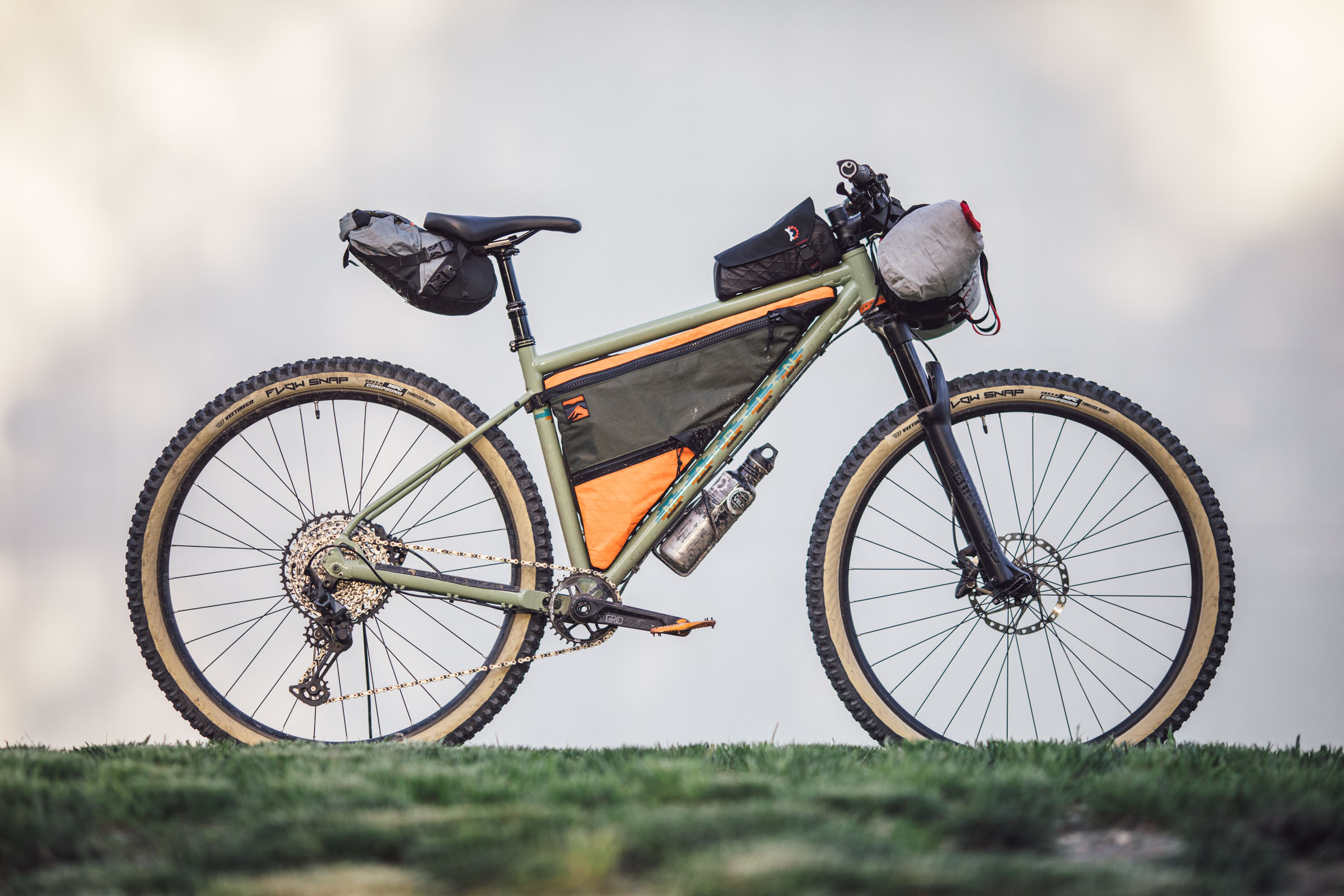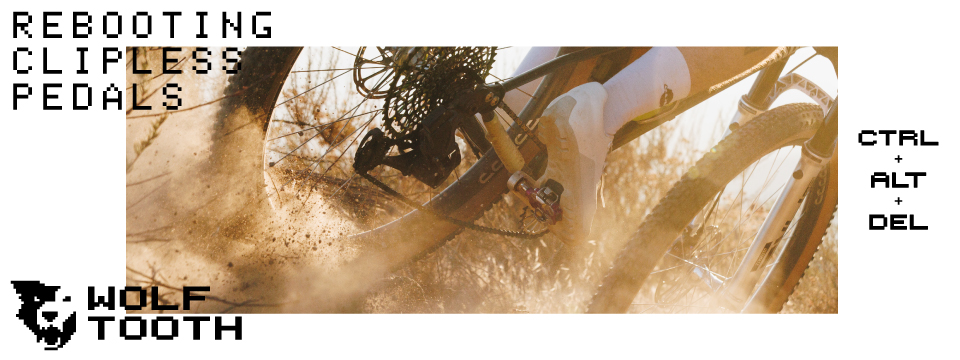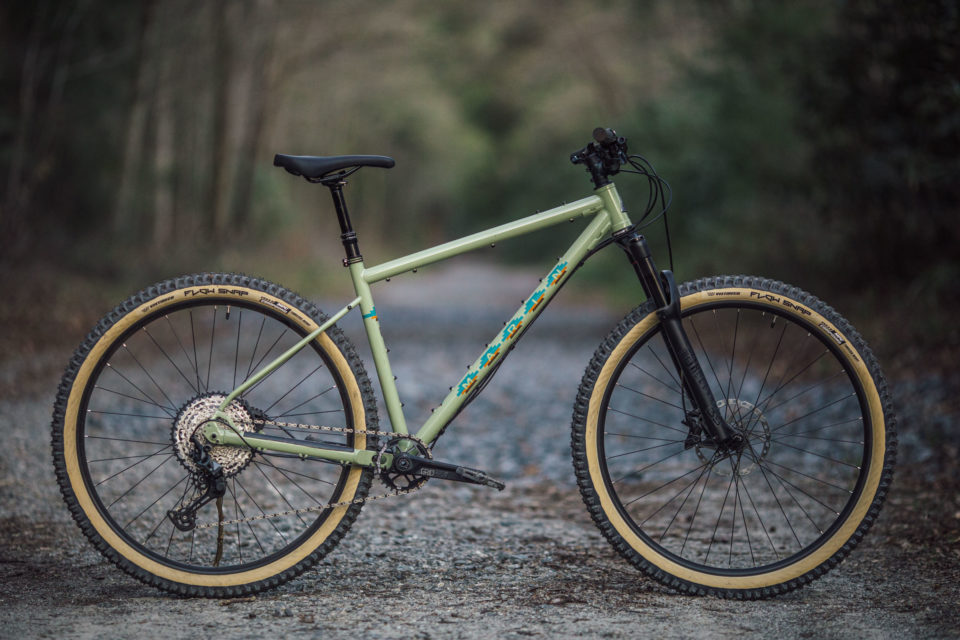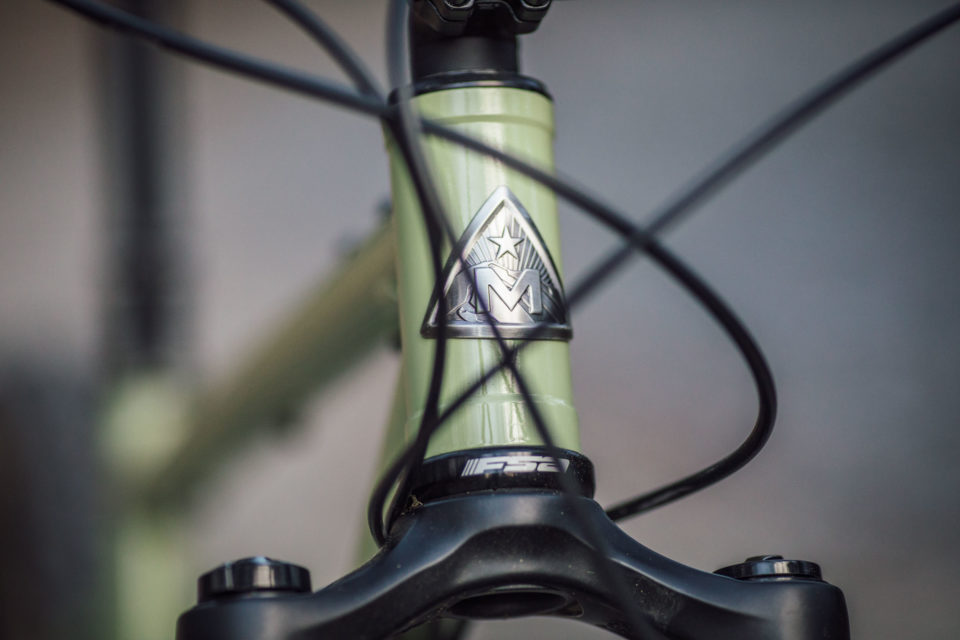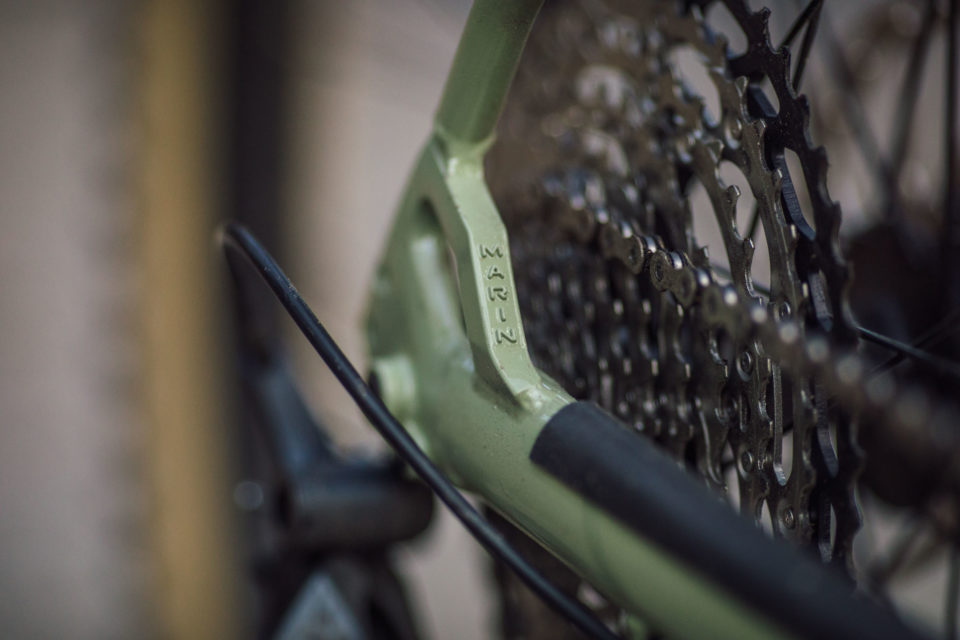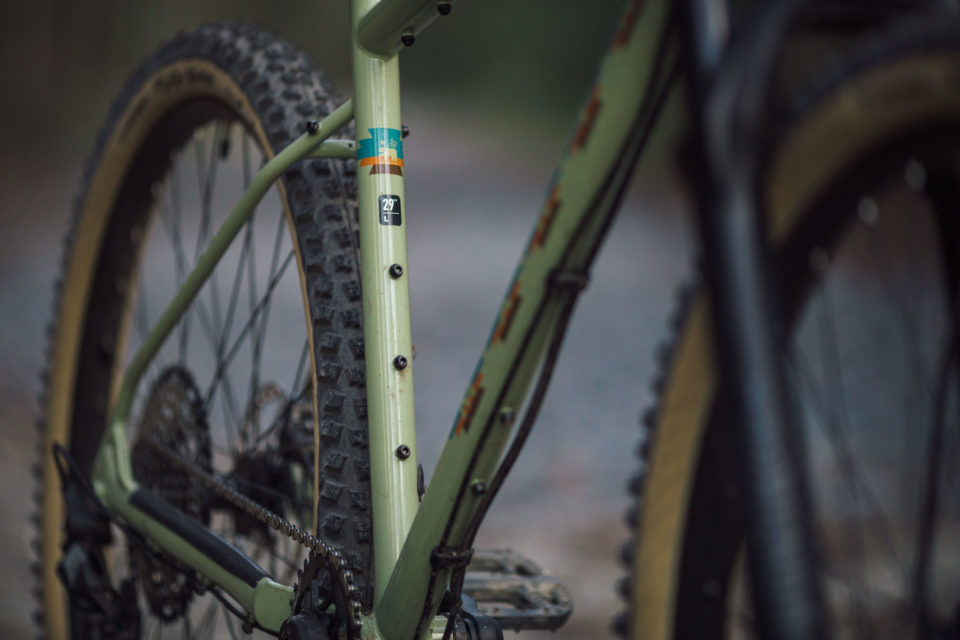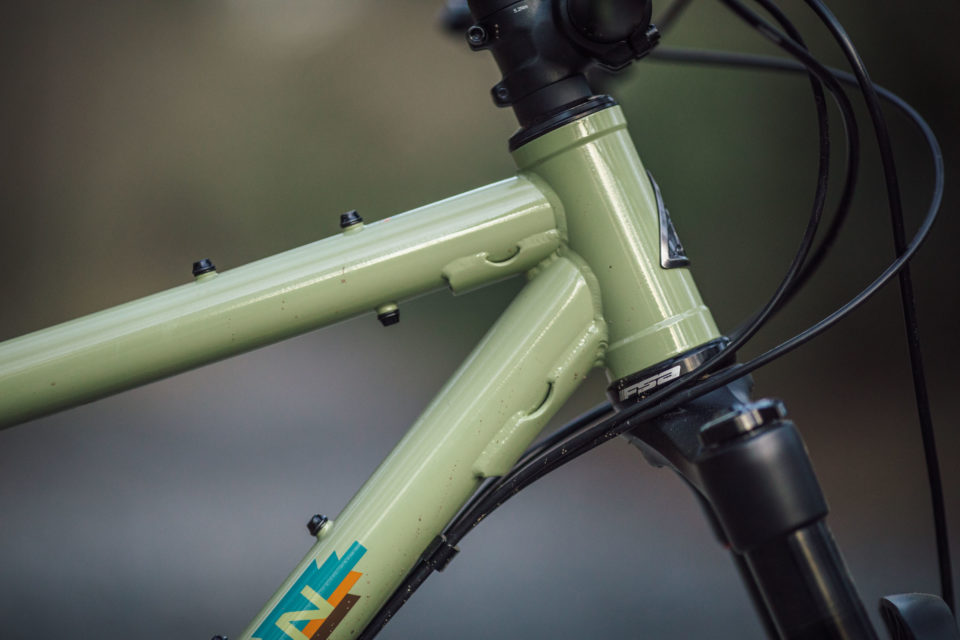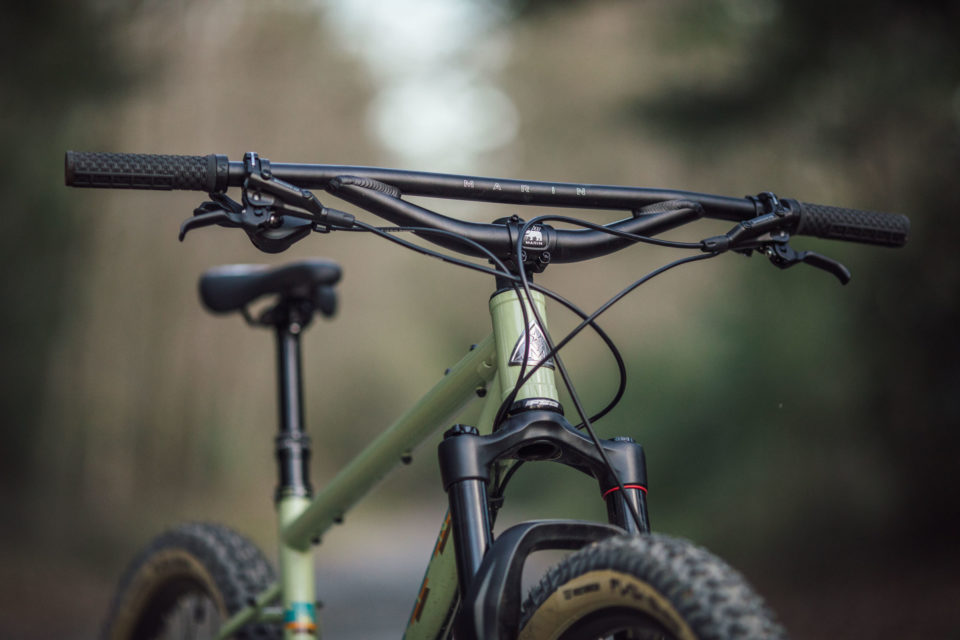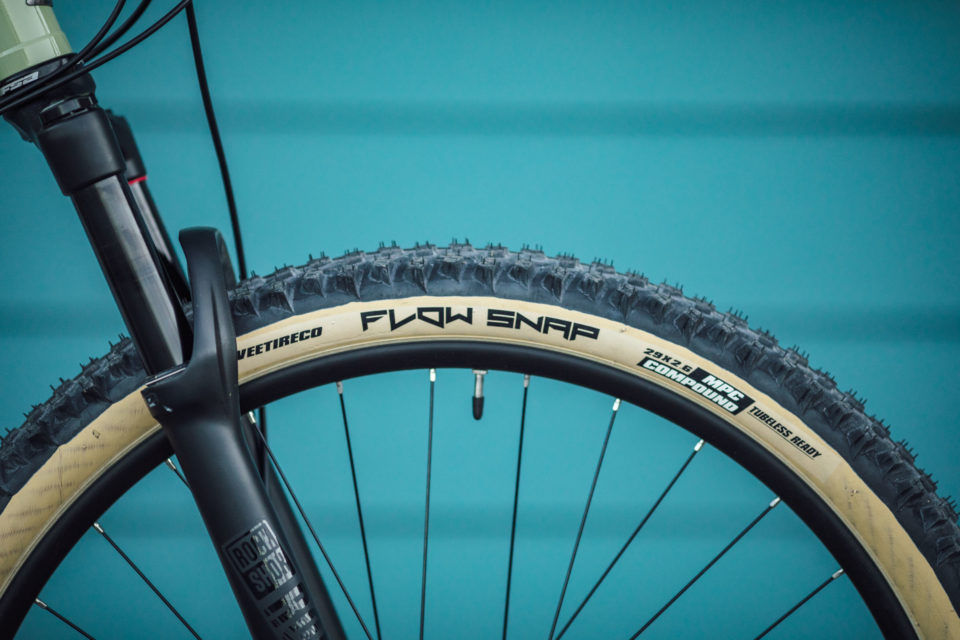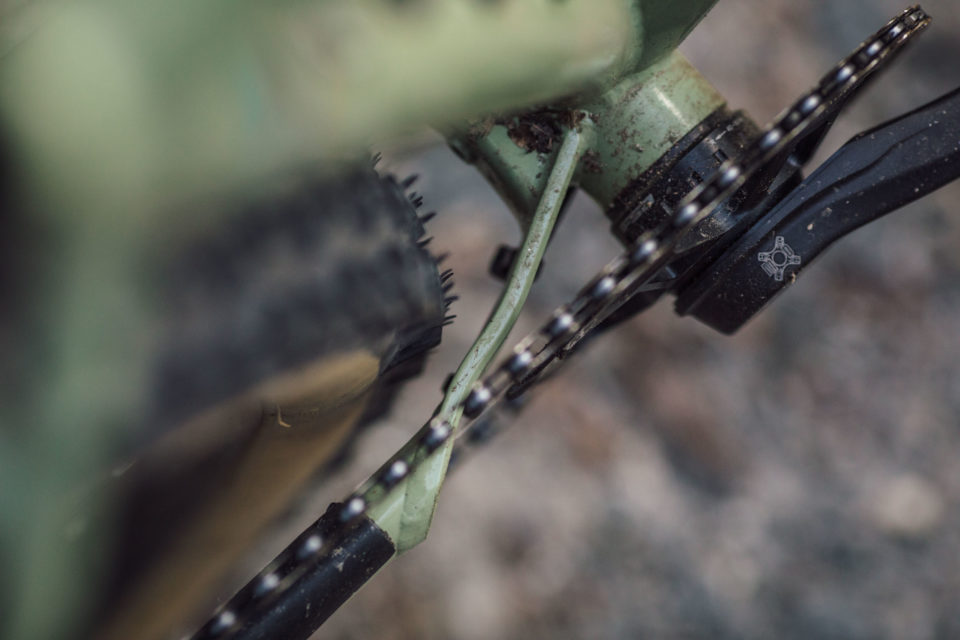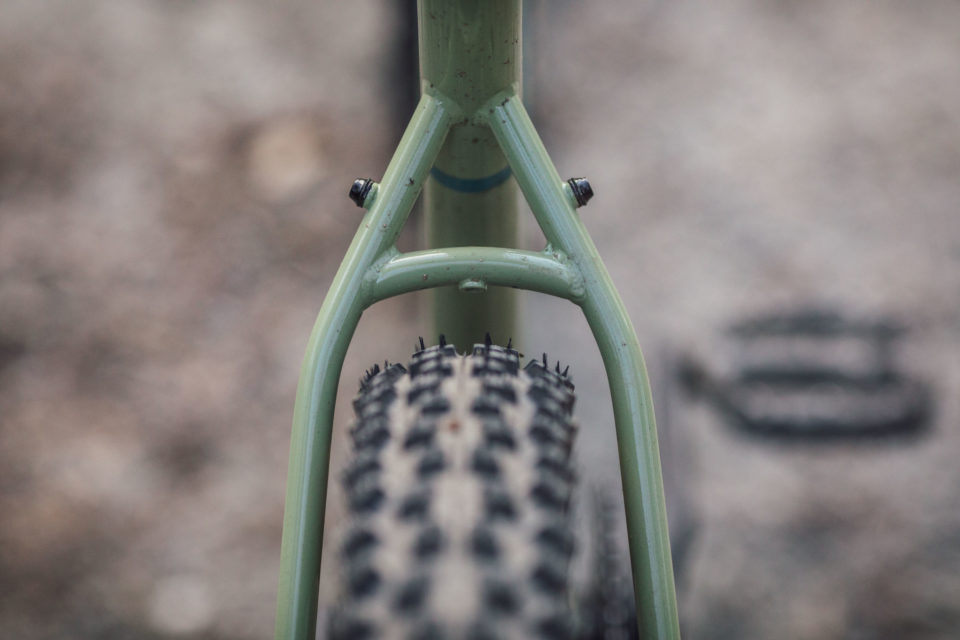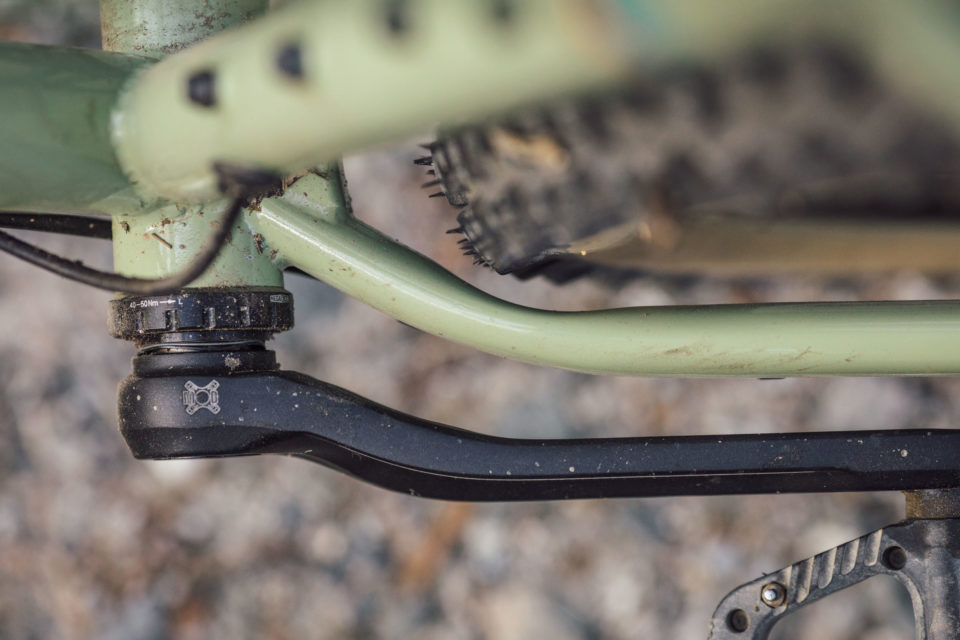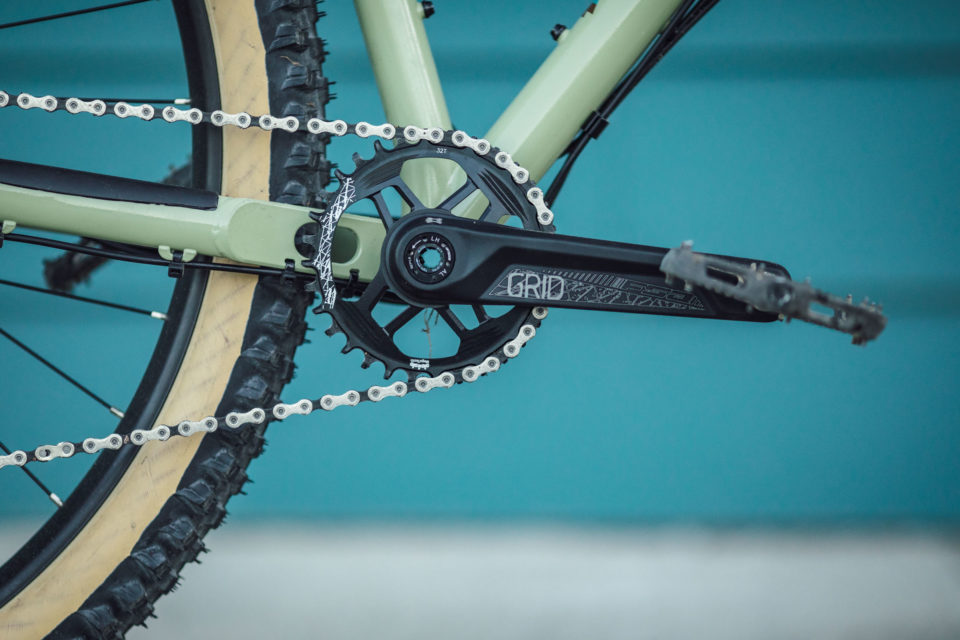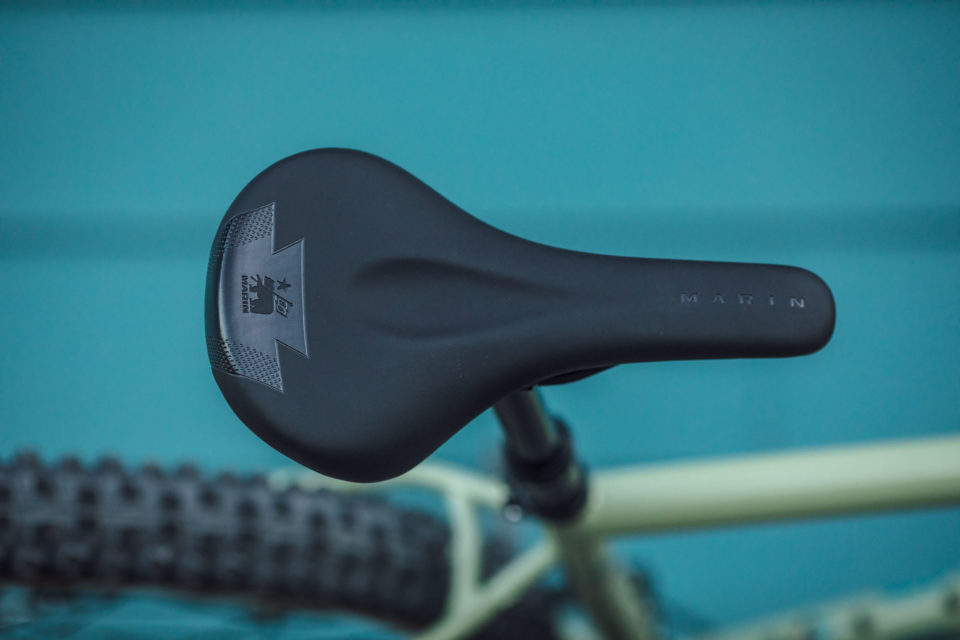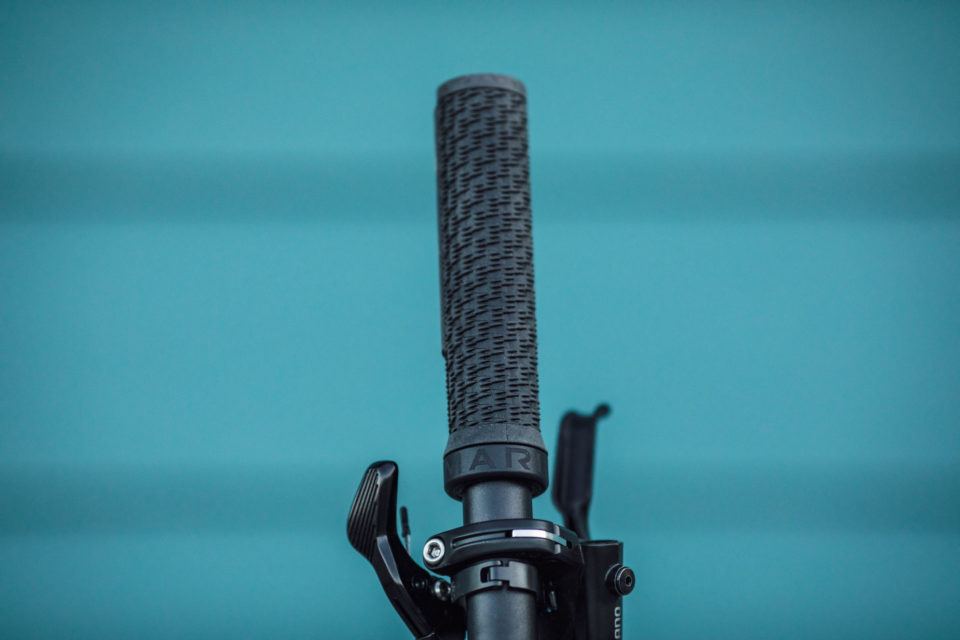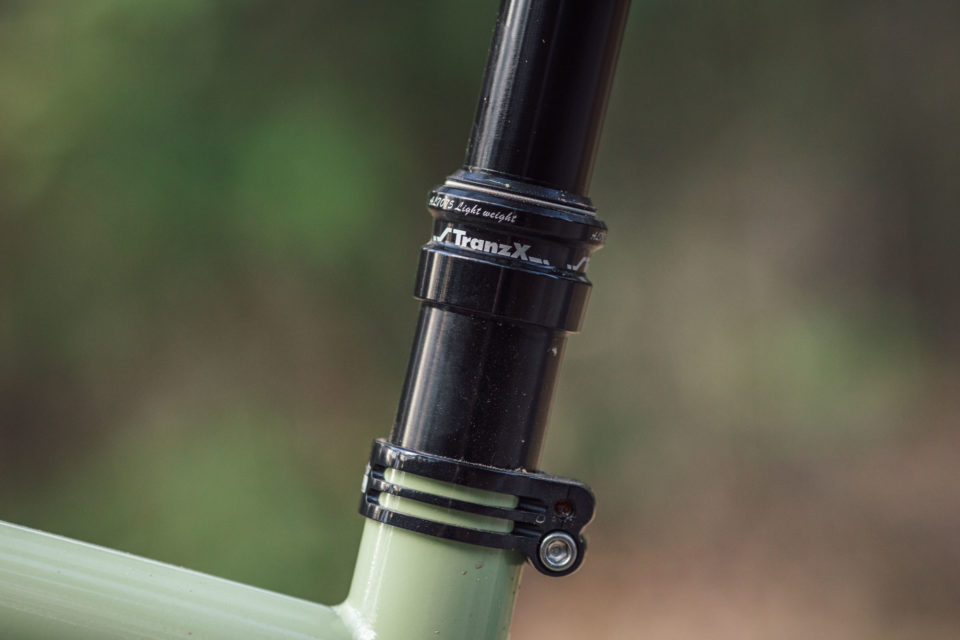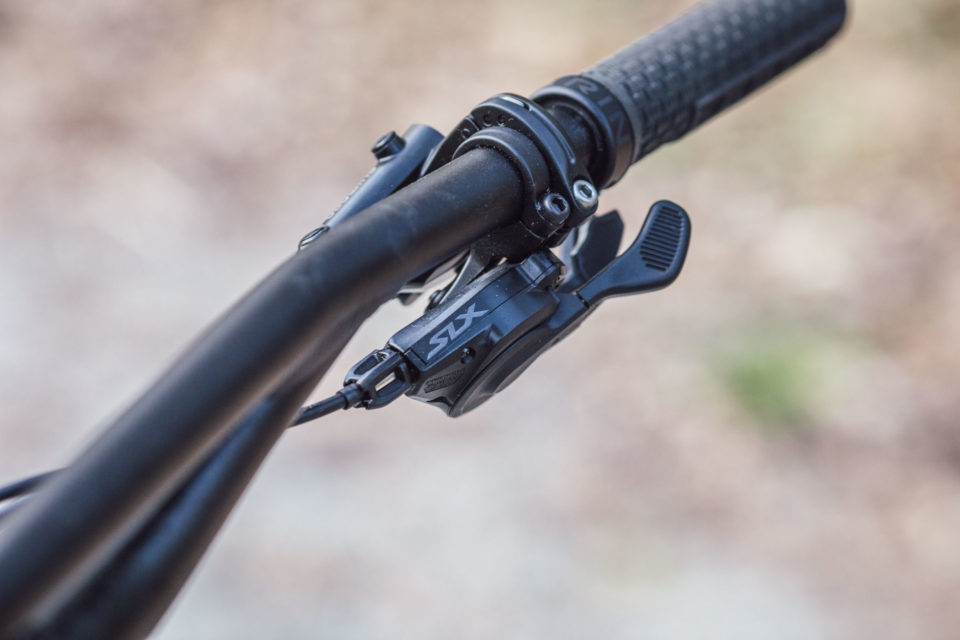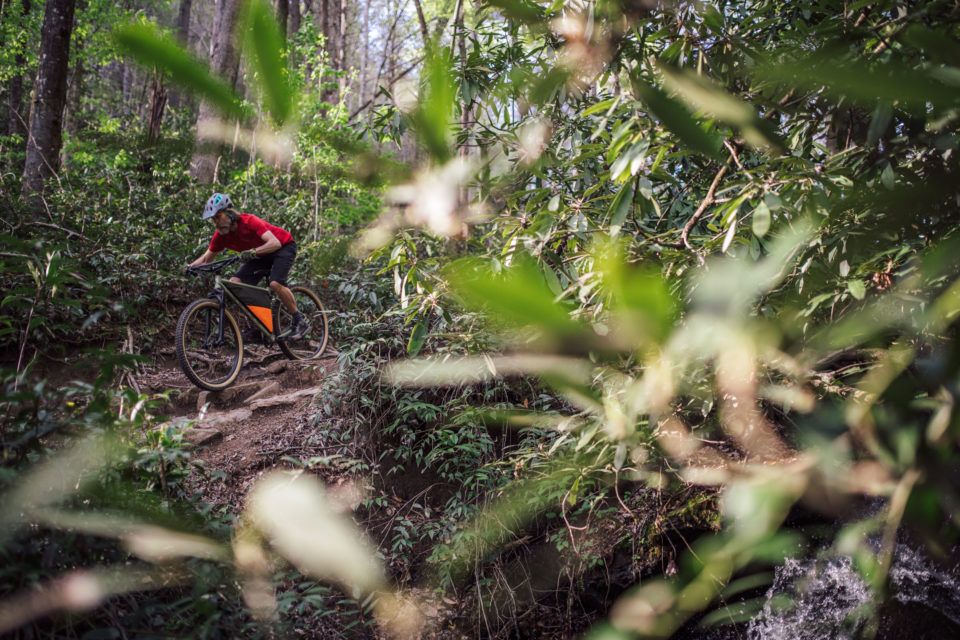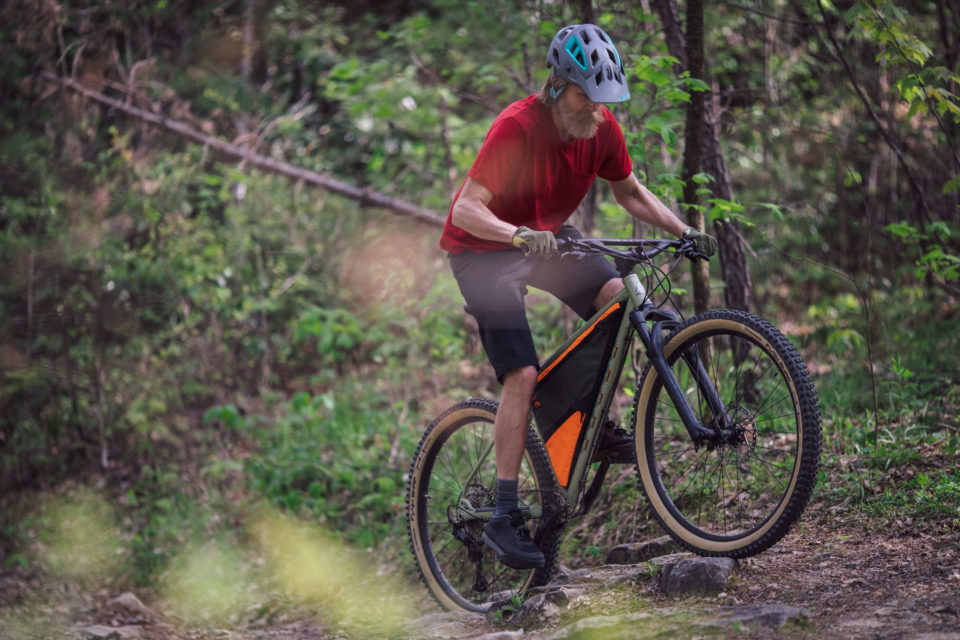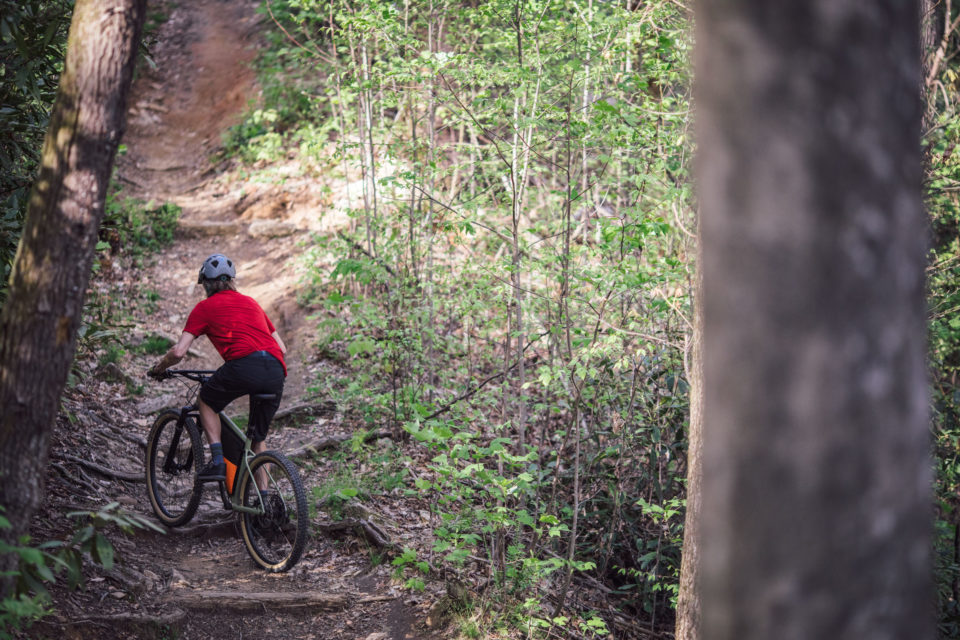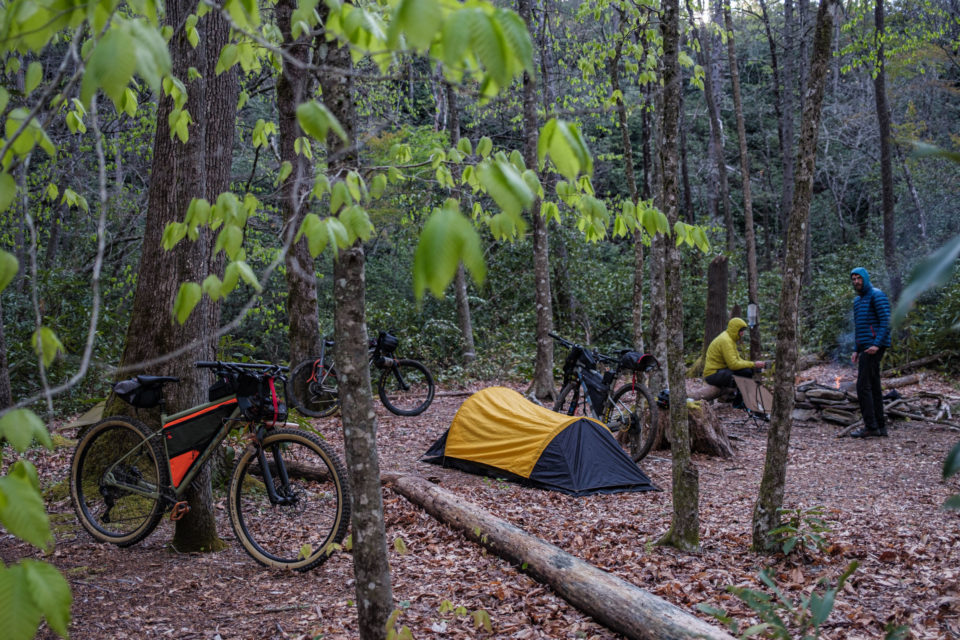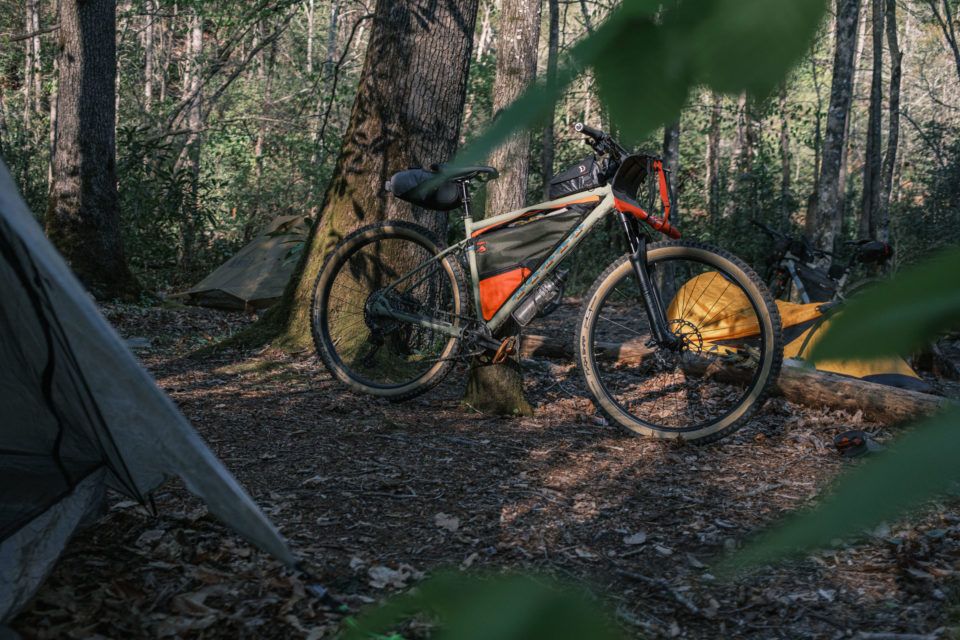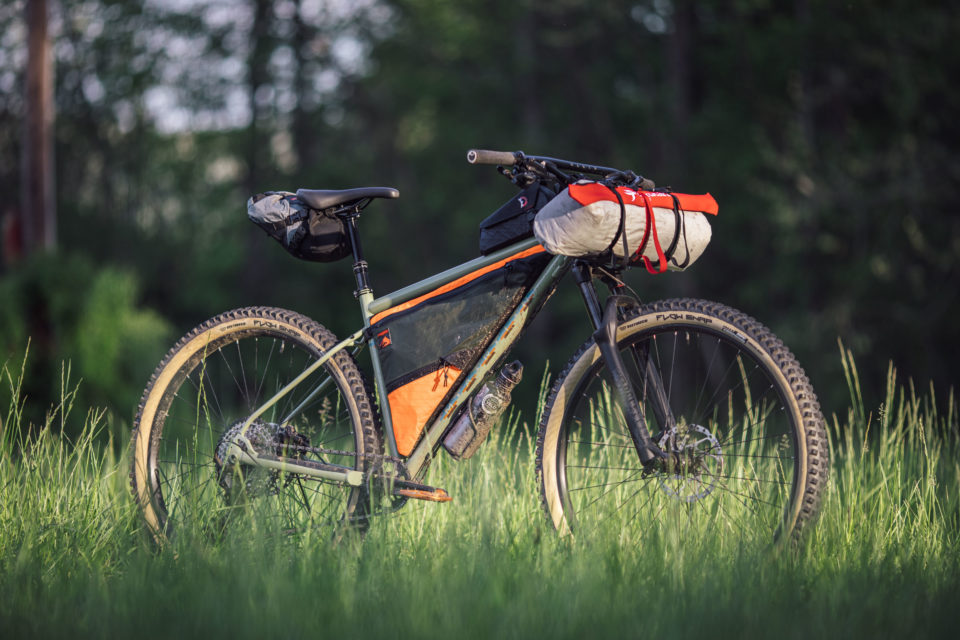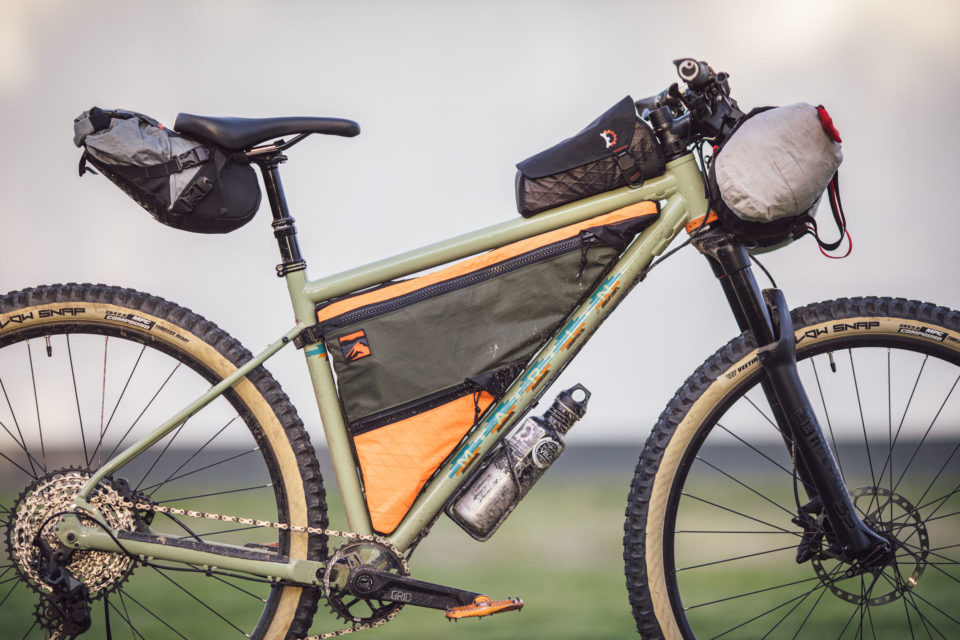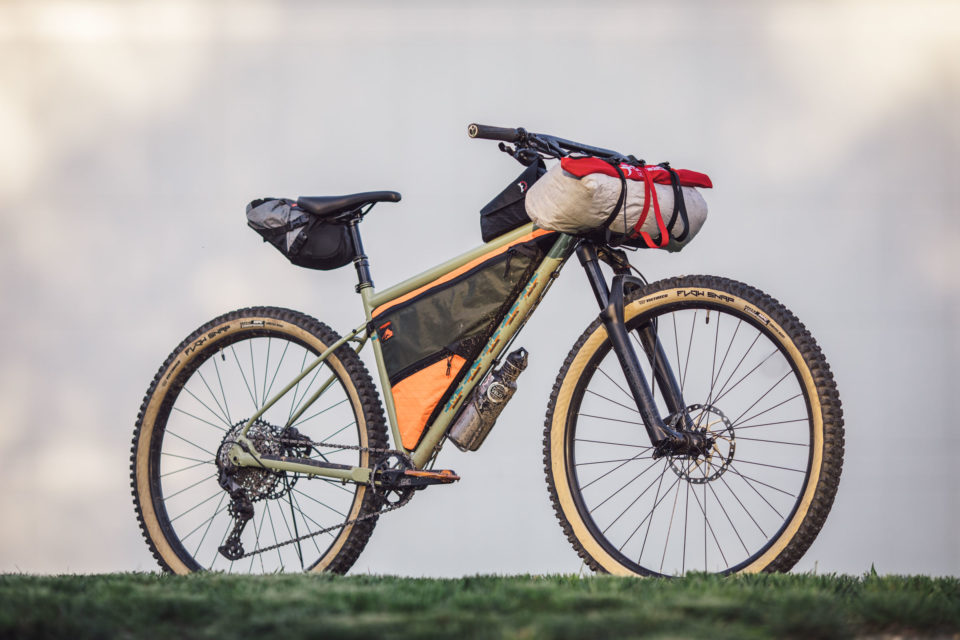2020 Marin Pine Mountain 2 Review
Marin retooled the 2020 Pine Mountain 2 into a more affordable bikepacking-centric trail hardtail with a record number of threaded eyelets, more progressive geometry, and flashy build details. We’ve been testing one since March for this full review…
PUBLISHED Jun 30, 2020
Riding photos by TJ Kearns
When Marin resurrected its 30-year-old Pine Mountain hardtail in 2015, the bike world was a different place. Back then, 27.5+ was the new kid on the block, BOOST was a scary word, gravel wasn’t yet a full-blown bike category, and bikepacking was just gaining industry momentum. It was December of that year when I rolled out of Cadiz, Spain, to map out the Altravesur on the all-new Marin Pine Mountain 2. The PM2 and other steel hardtails like it were becoming the quintessential “bikepacking bike” for a lot of riders in our then very small niche.
Shortly thereafter, the bike industry decided to make up an alternate story. Numerous manufacturers released “bikepacking-specific” models, many of which took the form of a drop-bar/gravel bike with a little more tire clearance and a few extra bottle mounts. How did bikepacking become so intertwined with gravel in the eyes of the industry? I digress. There’s nothing wrong with drop-bar bikes, or gravel, for that matter. We love them too. And many of us are using drop-bar bikes for all types of multi-day dirt adventures and gravel bikepacking routes. However, they certainly aren’t the only game in town, or even the most popular. Here’s where it’s worth interjecting the results from our Bikepacking Community Survey last year—with over 5,500 participants chiming in. On the subject of bikes, hardtails and rigid mountain bikes were the most favored type of bikepacking rig. And with new drop-bar/adventure rigs hitting the market weekly, we get pretty excited everything we see the release of a comparably rare bikepacking-specific hardtail. That was certainly the case when the 2020 Marin Pine Mountain 2 was revamped last September.
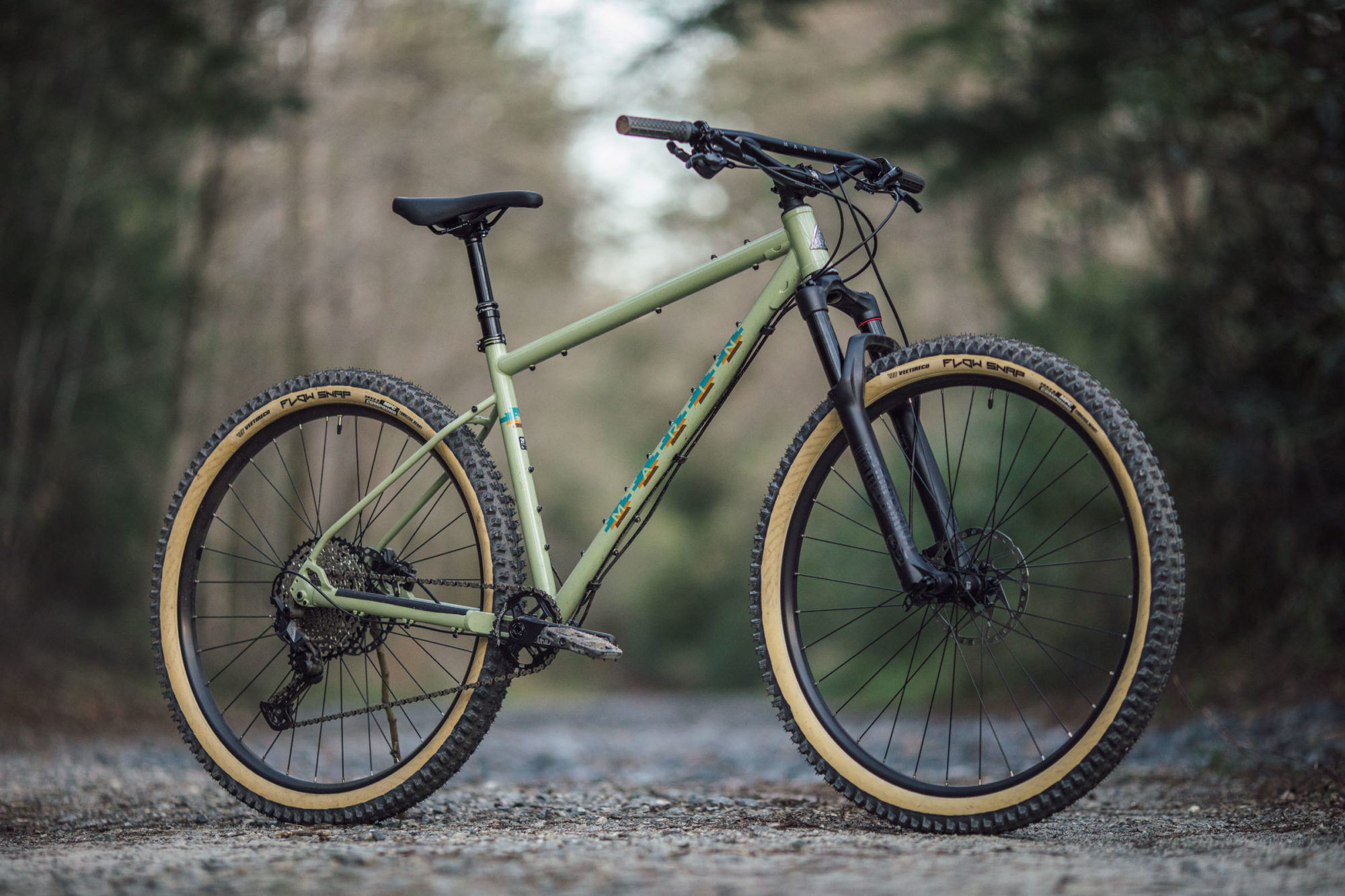
- Highlights
- Frame/fork: 4130 CroMo Steel, Sizes S M L XL
- Angles (L): 66.5° Headtube, 74.5° Seattube
- stack/Reach: 635mm/455mm (L)
- BB Drop/Chainstay: 60mm/430mm
- Bottom Bracket:BSA 73mm threaded
- Hub specs: 15 x 110 / 12 x 148mm (F/R)
- Seatpost: 30.9mm
- Max tire size: 29 x 2.6″
- Price: $2,099
“It’s a Bikepacking Bike!”
When the first photos of the 2020 Marin Pine Mountain 2 surfaced, they screamed “adventure,” or at least what some people think adventure looks like. The most striking feature is the record number of mounts on the frame. It’s hard to ignore 15 bosses inside the frame triangle, in addition to two more on the top tube and five under the down tube, plus rack and fender mounts. While these may seem excessive to some, they certainly came in handy for making a full bolt-on frame bag. In fact, Marin provides schematic drawings on their website for bag makers to help create perfectly fitting strapless frame bags. Rockgeist used Marin’s template when making the bag shown in many of these photos.
If all those mounts didn’t clue you in on this bike’s intention, perhaps Marin’s slightly extravagant aesthetic choices did. First, there’s the muted sage Southwestern-themed paint and graphics—apparently, some people like this and others don’t. Then, there’s the tan-wall tires, another aesthetic that’s been aligned with the adventure cycling segment, for some reason. And to connect with the bespoke bike crowd, Marin specced the top-of-the-line Pine Mountain 2 with its moto-style “Bedroll Handlebar.”
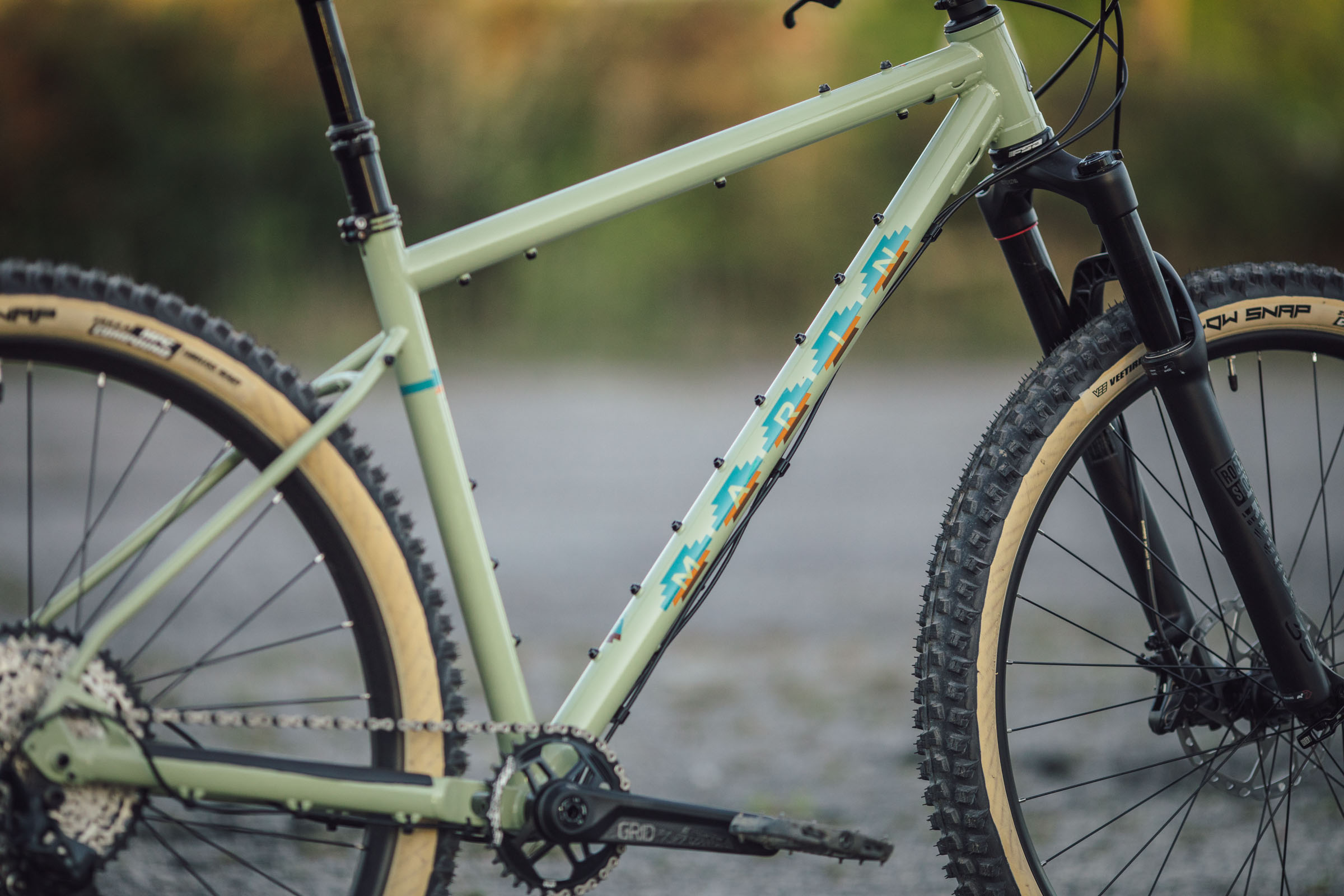
Unfortunately, the latter two aesthetic choices didn’t really play well with the PM2’s bikepacking ethos, and practically ruined its ride quality. The aluminum Bedroll Handlebar is the stiffest handlebar I’ve ever used. It practically destroyed my hands on long rides, even after I replaced the grips with the otherwise comfy Ergon GA3s. And although Marin claims the 50mm rise bars were designed to provide more packing versatility, the crossbar’s extra mounting real estate doesn’t make up for the Bedroll’s poor performance.
In addition, the Vee Flow Snap tires might just be the worst tires I’ve ever ridden. The paper thin sidewalls completely buckle when pushed in corners, even at 22-24 PSI. This was flat out dangerous and required me to ride more conservatively and run higher pressures to keep them from folding, ultimately nullifying any of the high-volume tire benefits. And while you might think that thin, tan sidewalls equate to a free-rolling, supple ride, that doesn’t really pan out on gravel as the chunky tires are slow and sludgy.
Frame Changes and Ride Changes
Aesthetics and throw-away components aside, the new Pine Mountain platform got a few significant structural changes as well. The most visible transformation is that Marin ditched the 27.5+ tires that I rode across Spain and built the Pine Mountain around 29 x 2.6″ tires. Concurrently, I’ve become quite a fan of this tire size, both for trail riding and bikepacking. It offers an excellent blend of traction and rollover for technical trail riding, with the fatigue-mitigating quality of high-volume tires. All this comes without as much of a rotational weight penalty as 29+ rubber. This was a welcome change.
The frame is also significantly different, down to the type of steel used in the tubeset. When Marin originally revamped the Pine Mountain back in 2015 (for the 2016 model year), the high-end Pine Mountain 2 got a near-perfect build kit and a premium Columbus Thron steel frame with a raw steel finish and a clear coat to show off the brazed welds. In order to reduce the PM2’s price tag, Marin changed the frame material to their “Series 3” 4130 Chromoly. While it’s hard to properly compare the 2020 model to its predecessor that I rode five years ago, I’m convinced that the new 4130 frame is stiffer than the Colombus Thron tubeset. This could be the thickness of tubing used, or other subtle changes in the frameset, but as is, the PM2 felt rather harsh on the rough trails we have here in western North Carolina. I was riding the Why Wayward and the Kona Unit X during the same testing period and this bike was much stiffer than both of them. Better tires with lower tire pressure could certainly help alleviate this.
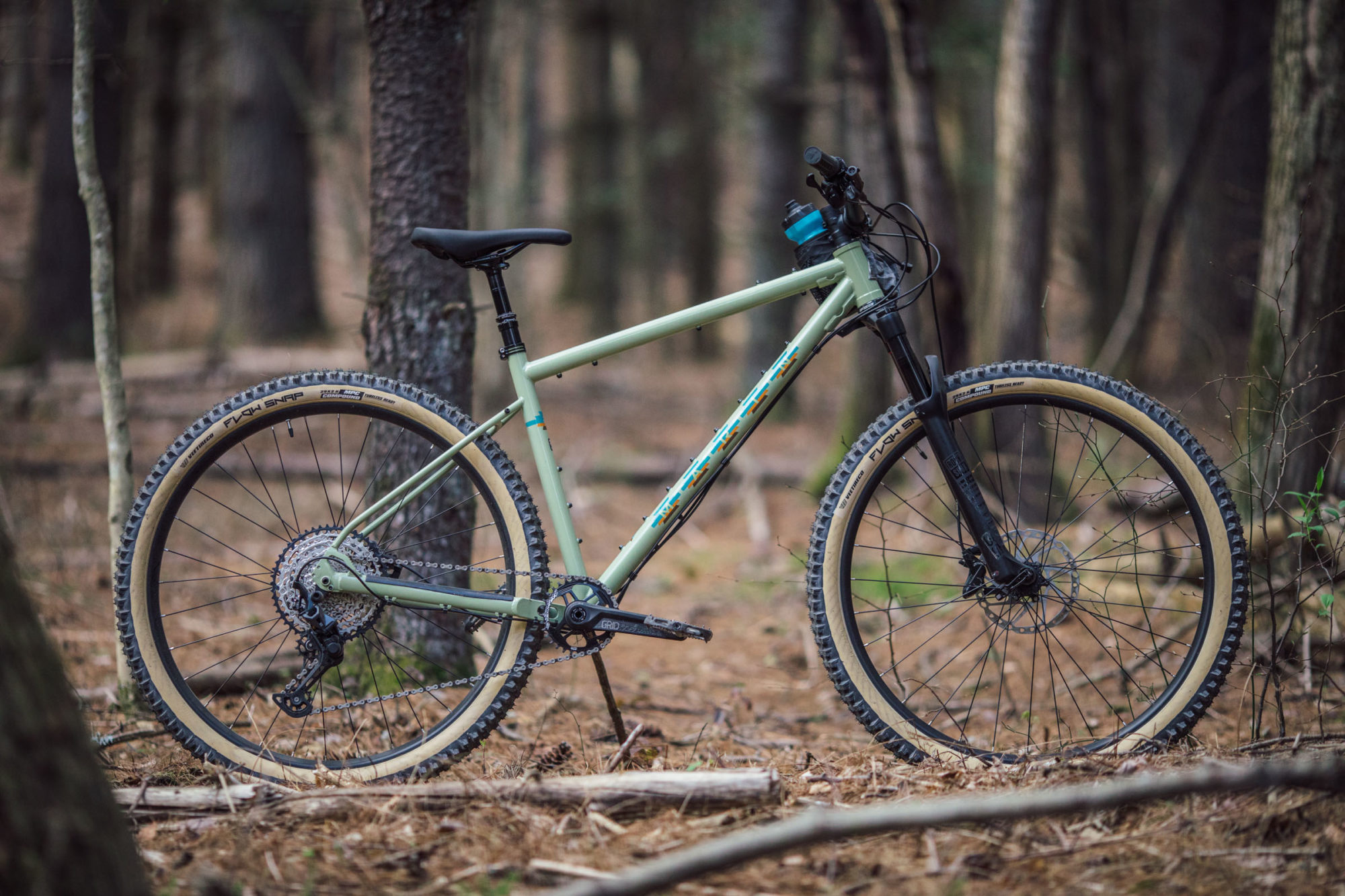
On the geometry side of the story, the new Pine Mountain was tweaked in an attempt to integrate a few modern trail bike trends. Its front-end was slackened to a more progressive 66.5° head tube angle. It also got 7mm shorter 430mm chain stays, a 1° steeper 74.5° seat tube, and a higher stack height. All three of those geometry moves looked great on paper, and they’re all changes that I can appreciate for the style of riding that I like. But, there were a few numbers that didn’t quite translate in the complete execution. For one, this is still a very short bike. With a 455mm reach on the large, it’s about 10-20 mm shorter than the Wayward and Kona I’ve also been riding. It’s effective top tube length actually got a hair shorter, at 619.3mm on the large. I found this to be quite odd since they specced the bike with a super-short 35mm stem. In hindsight, I wish I would have tested the XL. It would have provided the desired length, and given my long 34” inseam, I probably would have been able to keep the 150mm dropper post and benefited from a larger frame triangle. However, I’ve often found XL frames to simply feel too big, and they lose a little maneuverability compared to their smaller siblings. Ultimately, as you’ll see in a few of these photos, I swapped to a 60mm stem and slammed the saddle rearward to make it fit.
(Budget) Build Kit
While the $2,750 2016 Pine Mountain 2 had an excellent build kit featuring a Fox 34 fork and a Shimano XT drivetrain, the 2020 model received a budget-level parts treatment to reduce the price of complete close to $2k. Here’s the full kit with thoughts to follow…
- Frame: Series 3 Double Butted & Heat Treated CrMo
- Fork: RockShox FS 35, 120mm
- Seatpost: TranzX Dropper Post
- Headset: FSA Orbit ITA, Sealed Cartridge Bearings, 1 1/8″ x 1 1/2”
- Bottom Bracket: FSA Outboard Cartridge Bearings
- Brakes (front): Shimano MT520, 4-Piston, Hydraulic Disc, 180mm Rotor
- Brakes (rear): Shimano MT500, 2-Piston, Hydraulic Disc, 160mm Rotor
- Brake Levers: Shimano MT500 Hydraulic
- Shifter: Shimano SLX 12-Speed
- Rear Derailleur: Shimano SLX 12-Speed
- Cassette: Shimano SLX M7100 Cassette, 12-Speed, 10-51T
- Crankset: FSA Grid, Modular 1x, 32T Direct Mount MegaTooth Chainring
- Chain: KMC X12
- Front Hub: Forged Alloy, 110x15mm, Sealed Cartridge Bearings, Centerlock Disc, 32H
- Rear Hub: Shimano, Microspline 148x12mm, Centerlock Disc, 32H
- Spokes: 14g Black Stainless Steel
- Rims: Alloy Double-Wall, Offset Spoke, 32mm ID, Tubeless Compatible
- Tires: Vee Tire Flow Snap, 29×2.6″, Folding Bead, Tubeless Ready
- Handlebar: Marin Pine Mountain Trail Bar, 50mm Rise, 780 Width, 10˚ Backsweep, 6˚ Upsweep
- Saddle: Marin Pine Mountain Trail
- Stem: Marin 3D Forged Alloy, 35mm
- Grips: Marin BearPaw Locking
Aside from the handlebar and tires, there wasn’t anything too off-putting about the PM2 build kit. It’s not perfect, but considering that this is a $2,049 bike, it’s not that bad either. Components that I like include the Shimano SLX 12-speed drivetrain and the entry level Shimano MT520 brakes, although I wish they’d have made both of them 4-piston, instead of just the front. The saddle was also surprisingly good and the TranzX dropper post worked fine, so no complaints there. If this were my bike, I’d immediately change the tires and handlebar, and eventually upgrade the wheels and fork (in that order) just to shave some weight off the 35-pound complete.
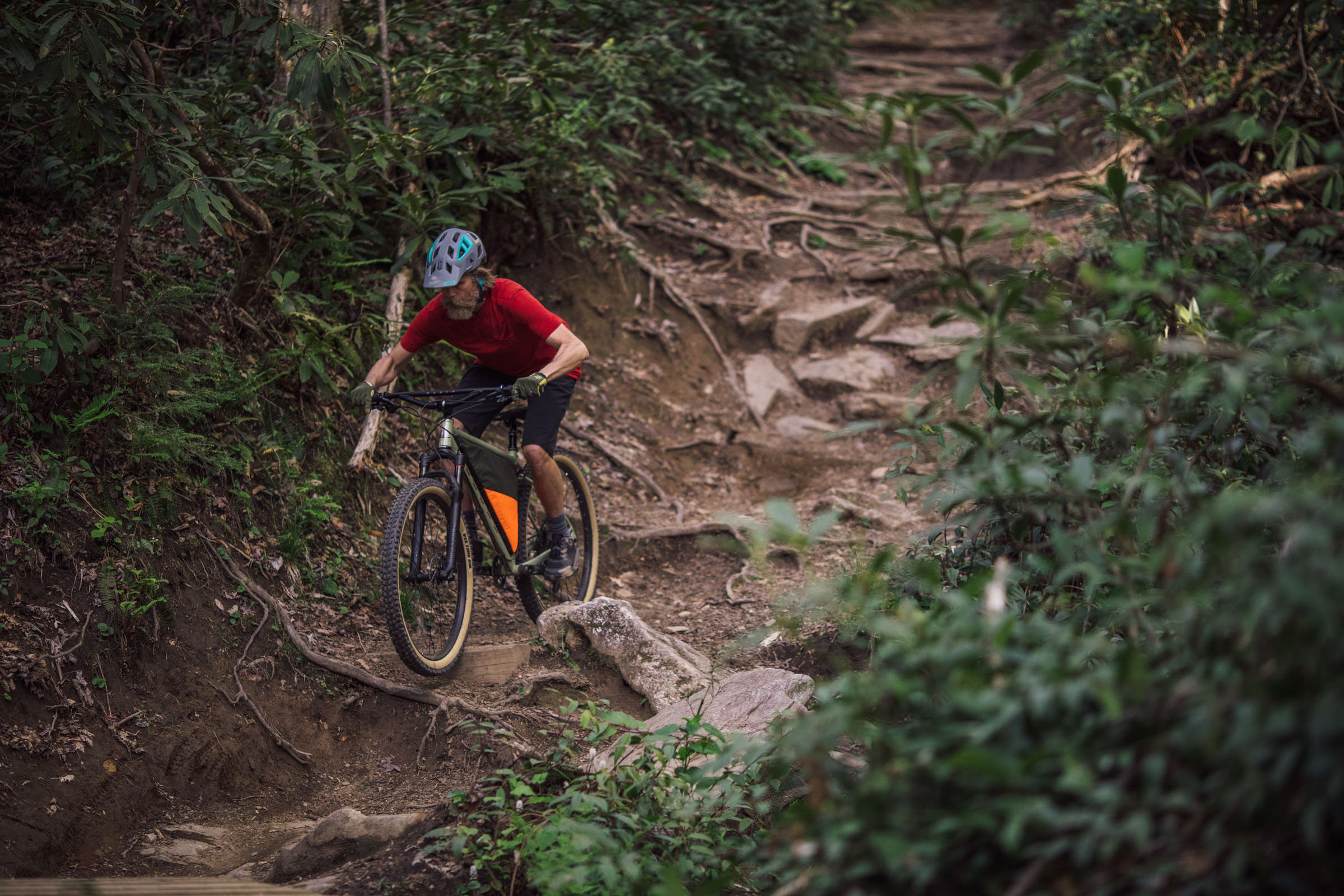
On the Trail
During my three-month test period with the 2020 Marin Pine Mountain 2, I took it on a couple of overnighters, but the bulk of my time with it was spent on local trails around the Pisgah National Forest and Dupont State Forest. I think that’s a fair place to judge this bike based on its trail-oriented geometry and meaty tires.
As mentioned, the handlebars and tires tarnished the ride quality of this bike. However, I continued to ride it as specced in order to figure out what I liked and disliked about it. One gripe I already mentioned was that it felt significantly harsh and stiff. However, I don’t think this is a deal breaker. With proper wheels and tires, this could be somewhat alleviated. Another caveat I suggested was the PM2’s reach. It’s definitely a little short for my taste, but no two riders are the same, so some folks might appreciate this. Other folks who are in between sizes might like to size up and have a larger frame triangle. The bike’s geometry was otherwise pretty good. I found it to be very stable when climbing technical trails, and fairly nimble and maneuverable on descents. It’s generally a fun bike and I especially like the comparably steep seat tube and moderately slack head tube angles.
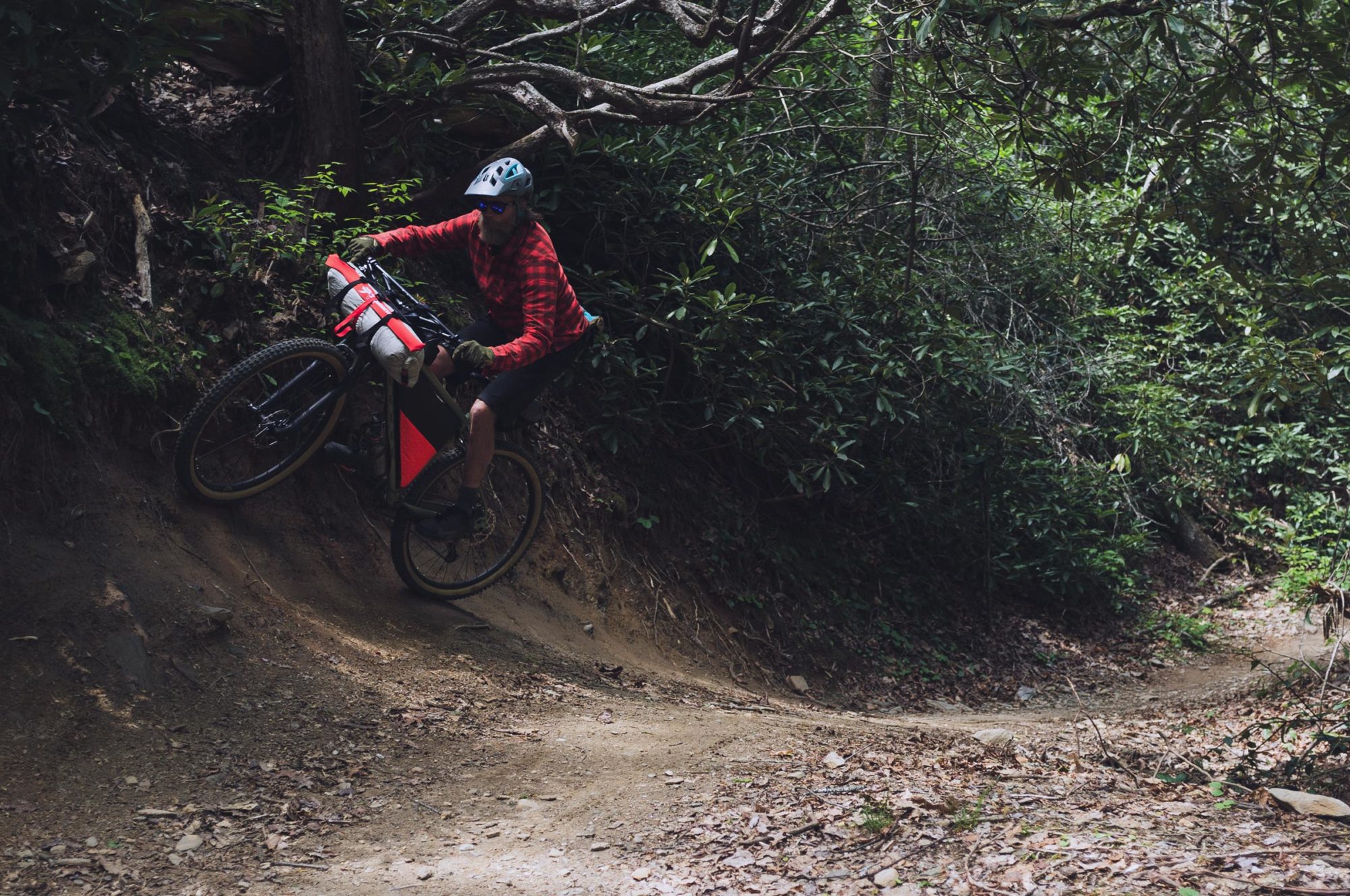
While Out Bikepacking
There’s no shortage of interior eyelets to create whatever type of frame bag you’d like for the new Pine Mountain 2. I debated having a wedge bag made for it to leave space at the seat tube for a large water bottle, which is one of my favorite configurations. But you could also do a weird arrow-shaped bag, leaving a space for a bottle on the down tube, should you wish. One little gripe I had is on the underside of the down tube, where Marin used bolt-in cable guides in three of the five eyelets, including two of the lower three. That essentially means that if you want a bottle placed in the low position, the cables could get messy. I’ve never been a fan of cable routing there, regardless. Note that in most of these photos the bottle is in the position where the two mounts were free.
Once loaded up, I will say that the Pine Mountain 2 felt right at home. The steeper seat tube worked well for steady pedaling and climbing, and the geometry felt fairly stable on singletrack and gravel. In addition, the added weight helped the otherwise stiff rear end feel a little more compliant.
- Model/Size Tested 2020 Marin Pine Mountain 2, Size Large
- Weight as tested 34.35 pounds (15.58kg)
- Place of Manufacture Taiwan
- Price $2,099
- Manufacturer’s Details MarinBikes.com
Pros
- A happy-medium geometry that offers a snappy feel on the trail, solid climbing prowess, and a fairly stable ride
- Built around 29 x 2.6” tires
- Unbelievable amount of bosses and a downloadable diagram for making a custom frame bag
- Well-priced as an entry level bikepacking bike, but there are a few needed upgrades
Cons
- Vee Flow Snap tires are horrible and dangerous
- Geometry misses the ideal mark with a reach that’s a little too short
- Not as compliant as the older model
- Heavy build with few disappointing components; handlebar is too stiff and fork is just okay
Wrap Up
Although my 800-mile ride aboard the Marin Pine Mountain 2 in 2015 feels like light years ago at this point, I enjoyed that bike and was excited to experience the new bikepacking-centric iteration of the Pine Mountain platform. On paper, Marin ticked a lot of boxes for me: a steel hardtail designed around 29 x 2.6″ tires, plenty of mounts, and semi-progressive angles. It’s also fairly easy on the eyes. However, I can’t say that I completely got on well with this bike. While the geometry offered a nice mix of playfulness and stability, the Pine Mountain 2 simply felt a little short for me. In addition, I found the rear end to be a little harsh on more rugged trails. All that said, I think the handlebar and tires were a little bit of a wrench in the machine, so to speak, which could have clouded my judgement. In addition, I probably should have tried the XL for a better fit, although I fear it may have felt too big overall.
With that said, if you’ve had your eye on the PM2, I wouldn’t completely discount it based on my personal gripes. I had a couple friends try it and they didn’t have the same complaints about the fit, although the stiffness of the handlebars was a common complaint. All in all, I think it’s an interesting bike, it has a pretty good build kit, and a lot to offer for the price. Just study up on the geometry and consider the size and fit before you commit. And definitely plan on swapping out the tires and handlebar before you roll out…
Please keep the conversation civil, constructive, and inclusive, or your comment will be removed.







